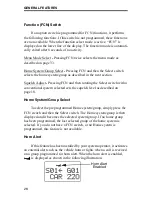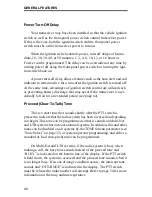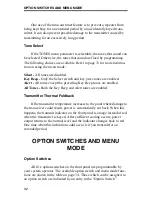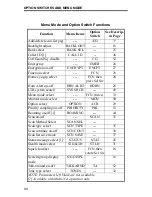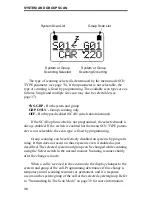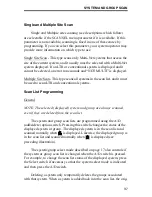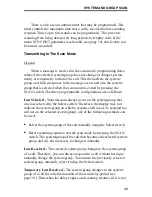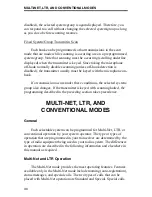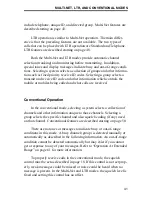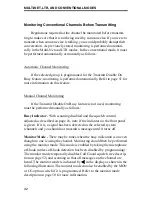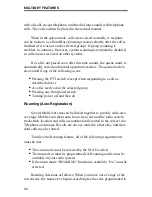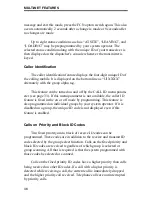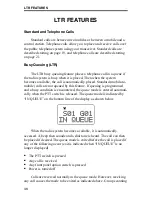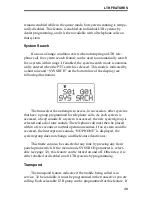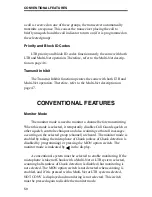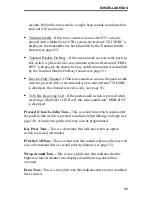
MULTI-NET, LTR, AND CONVENTIONAL MODES
42
Monitoring Conventional Channels Before Transmitting
Regulations require that the channel be monitored before transmit-
ting to make sure that it is not being used by someone else. If you were to
transmit when someone else is talking, you would probably disrupt their
conversation. As previously stated, monitoring is performed automati-
cally in the Multi-Net and LTR modes. In the conventional mode, it must
be performed automatically or manually as follows.
Automatic Channel Monitoring
If the selected group is programmed for the Transmit Disable On
Busy feature, monitoring is performed automatically. Refer to page 51 for
more information on this feature.
Manual Channel Monitoring
If the Transmit Disable On Busy feature is not used, monitoring
must be performed manually as follows:
Busy Indicator
- With scanning disabled and the squelch control
adjusted as described on page 18, note if the indicator on the front panel
is green. If it is, a signal has been detected on the selected system
(channel) and you should not transmit a message until it turns off.
Monitor Mode -
There may be times when the busy indication is on even
though no one is using the channel. Monitoring should then be performed
using the monitor mode. This mode is enabled by taking the microphone
off-hook (unless off-hook detection has been disabled by programming).
The monitor mode temporarily disables Call Guard squelch (see descrip-
tion on page 52) and scanning so that all messages on the channel are
heard. The monitor mode is indicated by
in the display as shown in the
following illustration. The monitor mode can also be enabled by the MON
or CG option switch if it is programmed. Refer to the monitor mode
description on page 50 for more information.

